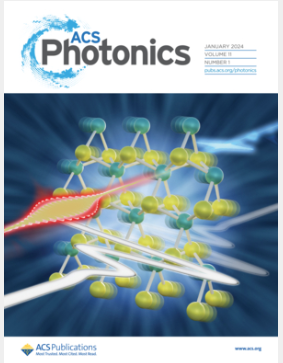Near-infrared Polarization Modulation of Photonic Devices by Ferroelectric Polarization
IF 6.5
1区 物理与天体物理
Q1 MATERIALS SCIENCE, MULTIDISCIPLINARY
引用次数: 0
Abstract
Heterojunction engineering is currently used as an effective strategy to modulate and enrich the optoelectronic properties of target materials. However, the strict energy band alignment and high external field energy driving the working band limit its implementation to some extent. Here, we present a novel photovoltaic/ferroelectric heterojunction, InSiTe3/α-In2Se3, in which ferroelectric polarization easily and efficiently regulates the built-in electric field in the interlayer. By reversing the ferroelectric polarization direction of In2Se3, we find that the electronic band structure of InSiTe3 shows a difference between closed (0 eV) and open (0.67 eV), which results in a logical control from ″0″ to ″1″. Further, this change in the electronic bands leads to a significant increase in light absorption intensity as well as blue- and red-shifting of the light absorption peaks. This is ascribed to variations in the direction of ferroelectric polarization affecting the interlayer charge transfer, leading to differences in the contribution of the electronic orbitals near the Fermi energy level. In photonic device simulations, the optical polarization anisotropy of InSiTe3/α-In2Se3-based photonic devices in the near-infrared (NIR) band can be modulated by switching the direction of ferroelectric polarization of In2Se3 through an electric field. These results suggest that ferroelectric and photovoltaic heterojunction engineering can serve as a conventional tool for fully electronically modulating the performance of optoelectronic devices.

基于铁电极化的光子器件近红外偏振调制
异质结工程是目前用于调制和丰富目标材料光电特性的有效策略。然而,严格的能带对准和驱动工作带的高外场能量在一定程度上限制了其实现。在这里,我们提出了一种新的光伏/铁电异质结InSiTe3/α-In2Se3,其中铁电极化可以轻松有效地调节中间层中的内置电场。通过反转In2Se3的铁电极化方向,我们发现InSiTe3的电子能带结构在闭合(0 eV)和开放(0.67 eV)之间存在差异,从而导致从″0″到″1″的逻辑控制。此外,这种电子带的变化导致光吸收强度的显著增加以及光吸收峰的蓝移和红移。这是由于铁电极化方向的变化影响了层间电荷转移,导致费米能级附近电子轨道的贡献不同。在光子器件模拟中,通过电场改变In2Se3的铁电极化方向,可以调制InSiTe3/α-In2Se3基光子器件近红外(NIR)波段的光极化各向异性。这些结果表明,铁电和光伏异质结工程可以作为全电子调制光电器件性能的常规工具。
本文章由计算机程序翻译,如有差异,请以英文原文为准。
求助全文
约1分钟内获得全文
求助全文
来源期刊

ACS Photonics
NANOSCIENCE & NANOTECHNOLOGY-MATERIALS SCIENCE, MULTIDISCIPLINARY
CiteScore
11.90
自引率
5.70%
发文量
438
审稿时长
2.3 months
期刊介绍:
Published as soon as accepted and summarized in monthly issues, ACS Photonics will publish Research Articles, Letters, Perspectives, and Reviews, to encompass the full scope of published research in this field.
 求助内容:
求助内容: 应助结果提醒方式:
应助结果提醒方式:


